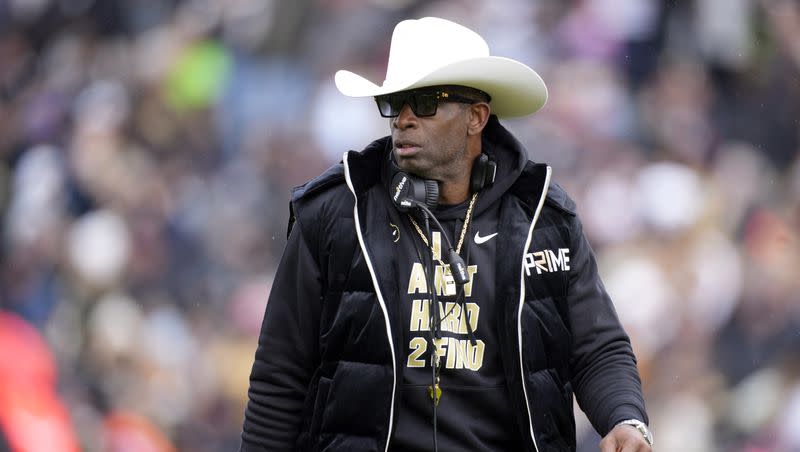What’s really going on with Colorado and conference realignment?

“The most compelling program in all of college athletics.”
That is how Pete Thamel, ESPN’s college football insider, describes Colorado at the moment.
The Buffaloes have dominated the conversation around college football specifically for weeks, maybe even months now.
Some of that was because of actual football news, i.e. some 40-plus transfers out of Boulder this spring/summer, departures that led to some notable transfers to Colorado.
New head coach Deion Sanders has garnered plenty of attention since he was hired as well, for a multitude of reasons, perhaps the simplest being he is Deion Sanders.
Of late, though, Colorado has been in the news because of rumored dissatisfaction with the Pac-12 Conference and a reported desire to return to the Big 12 Conference.
Is it real?
In a word, yes.
“Here’s the bottom line on Colorado,” Thamel writes. “It has met with the Big 12. It has been in the Big 12 in a prior life, leaving after the 2010-11 season. It remains improbable the Buffaloes leave for the Big 12 until the Pac-12 presidents get a firm sense of what their next television deal is going to look like. Colorado chancellor Phil DiStefano has said as much. However, sources told ESPN that Colorado’s patience has waned, which prompted the in-person meeting with the Big 12 back in May.”
Related
Why is Colorado hot potato in Pac-12/Big 12 rumors, nationwide chatter lately?
Experts say Pac-12 could have used BYU when negotiating new media rights deal
On ESPN’s College Football podcast, Thamel expounded further in a conversation with Rece Davis, stating, “Colorado is probably like the biggest domino looming right now on the realignment landscape. Colorado has had the most serious discussions with the Big 12. And to some degree, all of the ‘Four Corner’s schools’ and really all the West Coast schools that are in flux in the Pac-12 right now have had various degrees of reach out, connection.
“I don’t want to paint Colorado as rogue, like they are the only ones. If you are a Pac-12 school or a West Coast school and you are not seeking and doing due diligence on other league options you are being negligent to your university.”
So what does that mean?
Well, for one, the Pac-12 won’t be surprised if Colorado indeed leaves. Per Thamel, San Diego State is waiting in the wings.
“The Pac-12 won’t be blindsided if Colorado does end up leaving,” he writes. “It has been acknowledged around the league that the Buffaloes would be replaced by San Diego State, a quick solution that delivers a desirable market.”
Thamel reported that while Arizona, Arizona State and Utah all remain desired additions for the Big 12, Colorado leaving the Pac-12 does not mean one or more of those three schools would follow.
Related
The Big 12 is courting UConn. That has been reported by multiple outlets. And Memphis has made no secret of its desire to join the conference, too.
“UConn men’s basketball’s title run this spring certainly sparked more interest for (Big 12 commissioner Brett) Yormark,” The Athletic’s Max Olson writes, “and the school is viewed as a potential good fit for several strategic reasons. Championship-caliber men’s and women’s basketball tournaments are certainly high on that list of pros, but so is the opportunity to establish more of a presence in the New York City market.”
Patience may win out too, with ACC schools potentially becoming available if, and/or when, a university discovers a way out of the league’s grant of rights agreement.
As for the Pac-12, Thamel writes that there is every reason to believe the conference remains intact. It all comes down to the much discussed media deal, though.
“This shroud of uncertainty can all go away for the Pac-12 if the television deal has a numeric value and comparable reach to a deal like the Big 12’s, which delivers about $31.7 million annually to each school,” Thamel writes. “Sign a comparable deal and this stretch of Pac-12 awkwardness, vulnerability and uncertainty becomes a distant memory. But no one is still quite sure where the money and exposure are coming from.”

